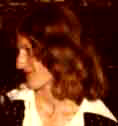HISTORY:
|
the bottom line:
|
in France |
|
the original publication of Djourno and Eyriès:
Facsimile and comments
|
in the USA |
In 1961 W. House (Los Angeles) took up the work of Eyriès and codified the procedure by positioning the electrode in a stable manner, by inserting it through the round window in the cochlear tube. He developed a reliable single electrode implant, which he placed in an increasing number of patients. This implant, which stimulated all the fibers of the auditory nerve, only allowed the recognition of speech rhythms. But it brought the totally deaf out of the silence in which they were locked up, and the sounds perceived improved their lip reading. W. House commercialized this system with J. Urban, in 1965, and continued to implement it until 1995. |
 Patrick MacLéod |
 Claude-Henri Chouard |
|
|
|
|
in France |
in 1974, the ENT Research Laboratory of the CHU St-Antoine in Paris, demonstrated in several patients suffering from total unilateral traumatic deafness with facial paralysis, that the electrical stimulation of 8 to 12 electrodes placed, isolated from each other, in different places of the cochlea, provided different frequency perceptions; In 1975, the French team developed the first 8 channels implant with sequential transmission, thus requiring only one antenna, providing the deaf person with the entire frequency range of speech; In 1976, thanks to the Bertin Company, several prototypes of this system were designed and installed in 6 patients suffering from total bilateral deafness: Bertin filed patent no. 77/07824 on March 16, 1977, and proposed a 12-channel system for international marketing. From 1984 onwards, Bertin's economic strategy led it to progressively withdraw from the development and industrialization of its systems. This task is taken over in 1988 by the M.X.M.-Neurelec company. In 1988, the Laboratory of Saint-Antoine proposes, by coupling 2 microprocessors, a completely digitalized and miniaturized system with 15 electrodes, | |||
 Konrad Burian |

Ingeborg |
|
in Austria |
In 1976 K. Burian, in Vienna, continuing the long tradition of the Viennese ENT school, proposed the first Austrian implant. His work was then taken up again shortly afterwards by Prof. Hochmair & Hochmair-Desoyez in Innsbrück, leading to the Austrian Med-El implant in 1982. |
|
in Australia |
Since the beginning of the 70's, G. Clark's team in Melbourne has been studying the tolerance and the installation of the material to be implanted in humans.
In 1979, G. Clark implanted a simplified multi-electrode system, sending only the voicing and the 1° forming vowels; but its rapid commercialization and its robustness ensured a very rapid diffusion. |
Currently, the 4 cochlear implants
cochlear implants currently in use in the world are
((in alphabetical order):):
the American implant
the Australian implant
the Austrian implant
the French implant





 Michael Merzenich
Michael Merzenich

